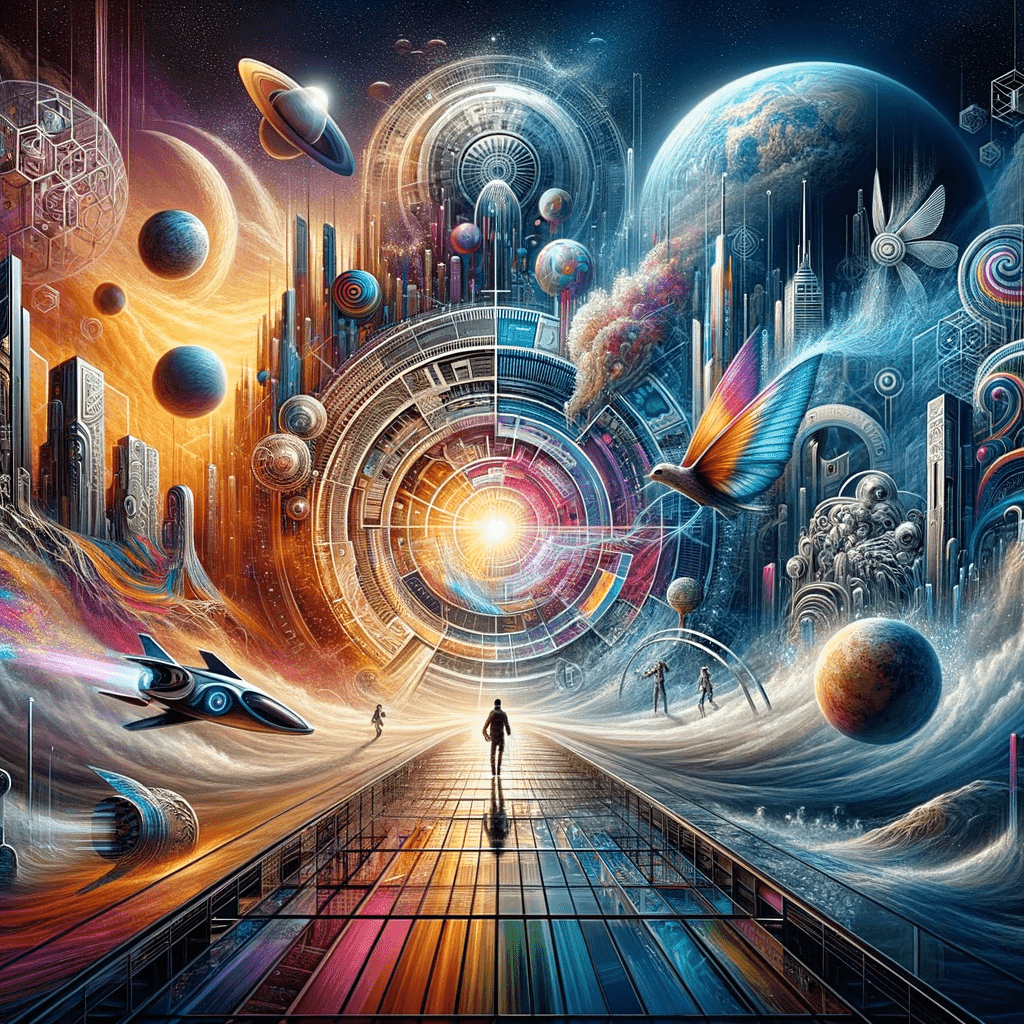Discover how Futurism integrated new technologies and scientific ideas, influencing modern art and beyond.
The Futurism, an artistic and cultural movement that originated in Italy at the beginning of the 20th century, had a profound and lasting impact on both art and technology. Founded by Filippo Tommaso Marinetti in 1909, Futurism sought to break away from the past and embrace modernity, speed, and innovation. In this article, we will explore seven key innovations of Futurism that integrated new technologies and scientific ideas, influencing modern art and beyond.
1. The Celebration of Speed and Movement
One of the most distinctive aspects of Futurism is its celebration of speed and movement. Futurist artists were fascinated by machines, automobiles, and kinetic energy. This was reflected in their artworks, which often aimed to capture the dynamism and frenzy of modern life.
For example, the painting “Dynamism of a Dog on a Leash” by Giacomo Balla depicts a dog in motion, with its legs and tail appearing to multiply to convey the idea of speed. This emphasis on movement has influenced not only painting but also sculpture and photography.
2. The Integration of Technology in Artwork
The Futurists were enthusiastic about new technologies and sought to integrate them into their artworks. This manifested in various ways, such as the use of industrial materials in sculptures and the incorporation of mechanical elements in paintings.
A notable example is the sculpture “Unique Forms of Continuity in Space” by Umberto Boccioni, which uses fluid and aerodynamic shapes to represent movement and speed. The use of materials such as metal and glass reflected the Futurists’ interest in industry and technology.
Experimentation with New Media
The Futurism movement also paved the way for experimentation with new media. Futurist artists were pioneers in using film, photography, and typography as expressive means. Marinetti himself wrote “Zang Tumb Tumb,” a work that innovatively utilizes typography to create a visual and auditory effect.
This experimentation influenced many subsequent art movements, such as Dadaism and Surrealism, and contributed to the development of visual arts in the 20th century.
4. Influence on Fashion and Design
Futurism was not limited to the visual arts; it also had a significant impact on fashion and design. Futurist designers aimed to create clothing that reflected the principles of the movement, using innovative materials and bold forms.
For example, the futurist architect and designer Antonio Sant’Elia designed buildings and cities that embodied the futurist aesthetic, with clean lines, geometric shapes, and an emphasis on functionality. These principles have influenced modern design and continue to be relevant today.
5. The Impact on Music and Theater
Futurism also had a significant influence on music and theater. The Futurists aimed to break away from traditional conventions and create new forms of artistic expression. Marinetti wrote manifestos on Futurist theater, proposing performances that combined music, dance, and visual arts.
**Futurist music, represented by composers like Luigi Russolo, introduced new sounds and techniques**, such as the use of unconventional instruments and the creation of mechanical noises. This paved the way for subsequent musical movements, like musique concrète and electronic music.
6. The Exploration of the Fourth Dimension
Another innovative aspect of Futurism was the exploration of the fourth dimension, which is time. Futurist artists sought to represent time and movement in their works, creating a sense of dynamism and continuous change.
For example, the painting “Nude Descending a Staircase” by Marcel Duchamp, although not strictly Futurist, reflects the influence of the movement in its depiction of movement through time. This exploration of the fourth dimension has influenced many modern and contemporary artists.
7. The Impact on Popular Culture
Finally, Futurism has had a lasting impact on popular culture. The principles of the movement, such as the emphasis on speed, technology, and innovation, have been adopted by various sectors, including cinema, advertising, and graphic design.
For example, the film “Metropolis” by Fritz Lang, although not strictly futurist, reflects the aesthetics and themes of the movement in its depiction of a futuristic and technologically advanced city. These themes continue to be relevant in contemporary popular culture, influencing films, video games, and other forms of entertainment.
Conclusion
In conclusion, Futurism has had a profound and lasting impact on both art and technology. Through the celebration of speed and movement, the integration of technology into artworks, experimentation with new media, influence on fashion and design, impact on music and theater, exploration of the fourth dimension, and influence on popular culture, Futurism has left a lasting legacy that continues to influence modern art and beyond.
For further insights on Futurism and its impact, it is recommended to visit the Treccani website.




